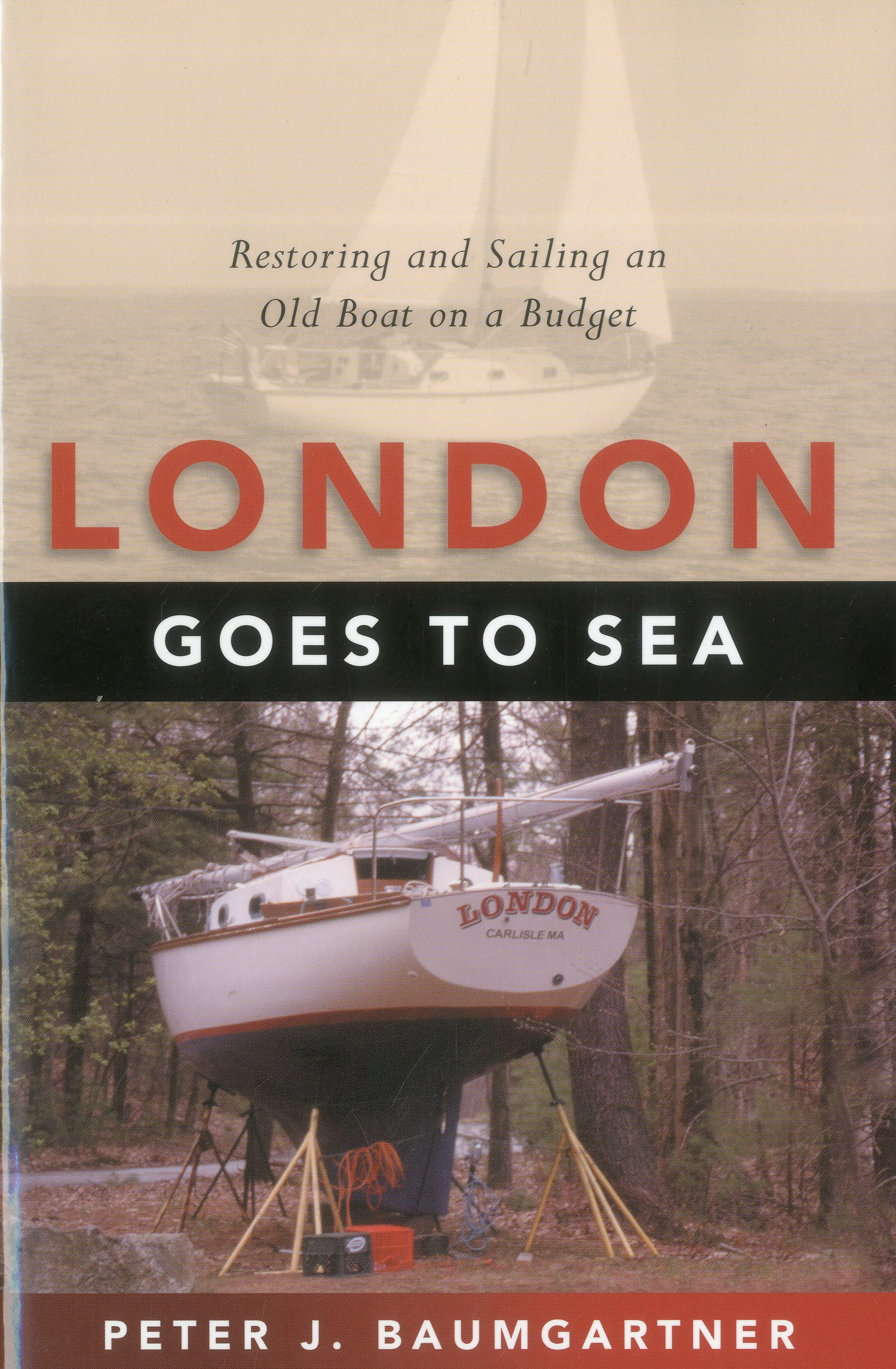
When I was refitting my own boat, I was desperate for any information I could get my hands on. I scoured the Internet for user groups and blogs, emailed anyone who seemed to have information I needed, and read every book on boat repair, electrical, and mechanics that I could get my hands on. Then, one day when I wasn’t really looking for it, I came across a book written by someone who had taken on the same project I had. I don’t just mean a boat refit project. I mean the same refit project: a 1977 Cape Dory 27.
In London Goes to Sea, Peter Baumgartner painstakingly describes his years-long effort to save a neglected old boat and turn her into his dream pocket cruiser. For a little inspiration, I revisited his book recently as we made our winter punch list for our current boat. More than anything else, Baumgartner’s book reminds me of what I tell anyone looking to get into boating with a used, old boat: you have to love tinkering with boats as much as you love sailing them, or it will be a relationship doomed to fail.
Buying an old boat, even one in relatively good condition, means more or less constant projects and maintenance. London Goes to Sea lays this bare. It also, however, makes clear that all that work truly creates a bond between the owner and the boat.
Baumgartner started how I started: a long, mostly fruitless search for the right boat. Our boats presented themselves to us similarly as well. My Cape Dory was floating at a dock whose neglect almost kept pace with the boat herself. His dreamboat was sitting on the hard, under tarps and seasons worth of leaves and pine needles.
The author describes, quite accurately, the joy of removing years of neglect, discovering the white gel coat underneath layers of mold and oxidation, and that first glimpse of what she will be when you are done. It is hard work, but essentially free, to wash and scrub and rinse and repeat until something of the original state of the boat starts to appear.

Anyone considering a big refit job, even on a small boat, needs to be made very aware of the true cost both in terms of dollars and time of such a project. Reading this book now, years after completing my own refit, I am surprised at how accurately Baumgartner captures the level of emotional and financial commitment. He makes clear how seemingly simple tasks can spiral out of control. What do you do, for example, when the trucking company doesn’t bring the jack stands they promised to bring, and you are stuck with a boat on a trailer and no way to set it down? How do you lift a mast off the boat without a crane in your backyard? As boaters we rely on one another for tips and tricks. A dock neighbor of ours showed me how he rigged a block and tackle in his cabin to lift batteries out of his engine room, for example.
It is this part of Baumgartner’s narrative that I find most compelling. The community of boaters he encounters as he repairs, floats, sails, and upgrades his Cape Dory is a unique and beautiful thing that I have only really encountered around boats. The decades of knowledge on the docks and at chandleries is invaluable and rare in our world. London Goes to Sea was written and published before the Internet really became what it is today, and so Baumgartner relied heavily on personal connections and actual human interaction, which makes the story a story.
As anyone who has been reading Nautical Nook regularly knows, I believe a good book must do more than impart information. A good book, even a book on the technical and mechanical aspects of boating, needs a narrative. It needs a story. This is the story of a refit project, but it is also about people and about the art of boat ownership. It is very readable and quite motivating. The joy the author shows throughout the book is contagious. I highly recommend it to anyone who enjoys tinkering with boats as much as they do sailing them.